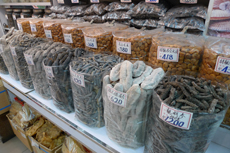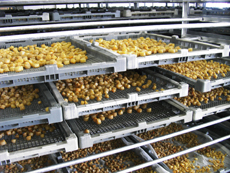




|
The prosperity of Hong Kong is paralleled by the active and rapid development of its tourism industry. During the last decade, Hong Kong has been facing with a dual challenge: it needs to attract international tourists to stay longer, to shop more and to do more sightseeing, and it also has to provide local attractions for domestic excursionists so that they can enjoy weekend breaks and day-trips at home. Despite the dominant metropolitan image of Hong Kong, the government has devised different strategies to encourage cultural tourism, one of which is through the efficient utilization of cultural resources of the local community. In cities such as Berlin and Paris, tourists can enjoy the well-planned walking tours to explore the various landmarks. With our Knowledge Transfer Project, we would make use of a local neighborhood in Sheung Wan to demonstrate the possibility of transfer knowledge from community people to visitors for a better understanding of Hong Kong from an anthropological perspective. 香港今時今日的繁榮盛世,和旅遊業積極迅速的發展有密切關係。過去十年間,香港面臨雙重挑戰:既要吸引外地旅客在港逗留更長時間來觀光購物,又要增加本土旅遊景點,令喜愛短線旅遊的港人留港度周末及一日遊。雖然香港的大都會形象深入人心,政府卻有不同的策略鼓勵文化旅遊,其中包括有效利用本地社區的各種文化資源。在柏林、巴黎等城市,遊客可以參加規劃完善的步行導賞團,遊走並探索市內的各個地標。我們的「知識轉移項目」會以上環的街區為例,從人類學角度探討社區居民傳承知識予遊客的可行性,讓遊客更深入地了解香港。 香港許多本土社區蘊含著有趣的歷史和文化故事,值得市民和遊客細味探索。香港在過去一個世紀發展為成功且重要的貿易樞紐,當中上環社區擔當著關鍵角色。今時今日,當我們來到上環,依然能夠一窺當年的傳統貿易面貌。十九世紀中,上環成立南北行,借助泰國的海外華僑網絡,促進各式海味入口香港,再與亞洲各地的華人社會進行海味貿易。當香港仍是一條小漁村之時,上環就已憑其得天獨厚的地理位置成為非常活躍的貿易中心,而它的傳統商業活動仍以某種形式保留至今。我們現在所認識的上環依然是「海味街」的集中地,隨處可見海味入口商、批發商、零售商,以及新式的小型海味超市。首次到訪上環的旅客必會感到這個地方與眾不同,甚至能嗅到一絲異國氣息。和當年一樣,這裡的海味商買賣來自世界各地的海味產品,例如日本鮑魚、印尼海參、孟加拉鹹魚、中國大陸的中藥材、本地出產的蝦醬、陳皮、魚肚、人蔘、燕窩等等。他們見證著上環的時代變遷,他們的故事也會組成這個社區的口述歷史。由於這些食品都是中華飲食文化的一部分,我們認為不論外地旅客或本地遊人,只要熱衷於香港的歷史文化,探索上環社區都會是他們的一個獨特體驗。即使是年輕一代的中國人,這種經驗也會令他們更加欣賞自身的文化。
|